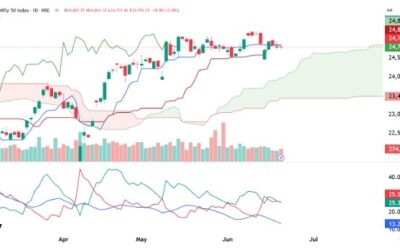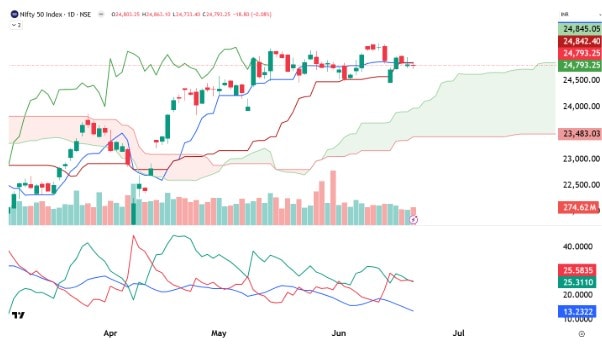Personal loan vs line of credit: Which borrowing option fits you best?

When you want to borrow money from a bank for a personal purpose, you can choose from various credit products. These include a personal loan, line of credit, credit card, etc. In this article, we will discuss what is a personal loan and line of credit, their differences, and which one you should choose.
What is a personal loan?
A personal loan is a financial product offered by a bank wherein the borrower gets a specified amount in lumpsum. It must be repaid within a specified tenure through equated monthly instalments (EMIs). The personal loan amount can be used for any purpose without disclosing it to the bank. The amount must be used for any legitimate purpose as allowed by law.
Some common purposes for which borrowers use the personal loan amount include medical, education, home renovation, family vacation, debt consolidation, wedding or any other family function etc.
What is a line of credit?
A line of credit is a financial product offered by a bank wherein the borrower gets a specified credit limit. The bank opens a current account in the borrower’s name with an overdraft facility. The borrower can use the credit facility up to the specified limit as and when required.
For example, a bank has given Babita a line of credit with a Rs. 2 lakh limit. Babita can withdraw any amount from this Rs. 2 lakh limit as and when required. For example, she withdraws Rs. 30,000. In this case, she will have to pay interest on the Rs. 30,000 only, and that too for the number of days she uses it. The remaining credit of Rs. 1.7 lakhs will be available to her whenever she wants to use it.
The interest is usually charged at the end of the month for the amount used and for the number of days used. Babita repays Rs. 20,000 after 50 days. In this case, the Rs. 20,000 will be added to the available limit, increasing it to Rs. 1.9 lakhs. Now, she will have to pay interest only on the Rs. 10,000. As the amount can be repaid at any time, there are no prepayment or foreclosure charges.
So, a line of credit provides a lot of flexibility to the borrower on the usage of the available funds. The borrower can withdraw any amount from the available limit at any time, pay interest only for the duration for which money is used, and repay at any time without any prepayment/foreclosure charges.
With a line of credit, as the money is available for spending whenever required, it can sometimes lead to overspending on things that are not required. For example, an individual may end up buying the latest mobile or some other gadget even though they may not need it. Hence, with a line of credit, the individual has to be careful about how and what to spend the money on.
Differences between a personal loan and a line of credit
A personal loan and a line of credit are both credit products that a bank provides to borrowers. While the end usage of money for both products can be the same, the way the features of both products work is different. Some differences between a personal loan and a line of credit include the following.
|
Feature |
Personal loan |
Line of credit |
|---|---|---|
|
Funds |
The borrower receives a lump sum amount on disbursal. |
A limit is authorised. The borrower can use it as and when required. |
|
Repayment |
The borrower has to pay a fixed EMI over the loan tenure. |
The borrower can repay as and when the money is available for repayment. |
|
Interest |
The interest for the entire loan is calculated at the beginning. The interest is a part of the EMI. |
The interest is charged only for the amount withdrawn and for the number of days withdrawn. |
|
Prepayment and foreclosure |
If the borrower makes any prepayment or forecloses the loan, there is usually a charge. |
The borrower can make a partial or entire repayment at any time without any charges. |
Personal loan vs line of credit: Which one should you choose?
An individual may choose a personal loan when they know the exact amount they need to borrow. If an individual prefers to repay a fixed amount every month in the form of EMIs, then also a personal loan should be opted for.
For example, an individual needs to renovate their house and has received an exact quotation for the same. In such a case, a person may opt for a personal loan as they know the exact amount required.
An individual may choose a line of credit when they don’t know the exact amount they need. Also, if the repayments are going to be uneven depending on as and when the funds are available, then also a line of credit should be opted for.
For example, an individual needs to undergo medical treatment for a family member. The doctor has suggested the treatment will go on for 4-6 months. The treatment progress will be tracked with regular diagnostic tests, and accordingly the future course of action will be decided. In this case, an individual can opt for a line of credit as they are not sure when and how much money will be required.
So, the choice of personal loan or line of credit will depend on how much money is required, when and how the repayment will be made, etc. These factors will depend on the purpose for which the individual needs money. Thus, it will all depend on the individual’s circumstances.
Gopal Gidwani is a freelance personal finance content writer with 15+ years of experience. He can be reached at LinkedIn.







